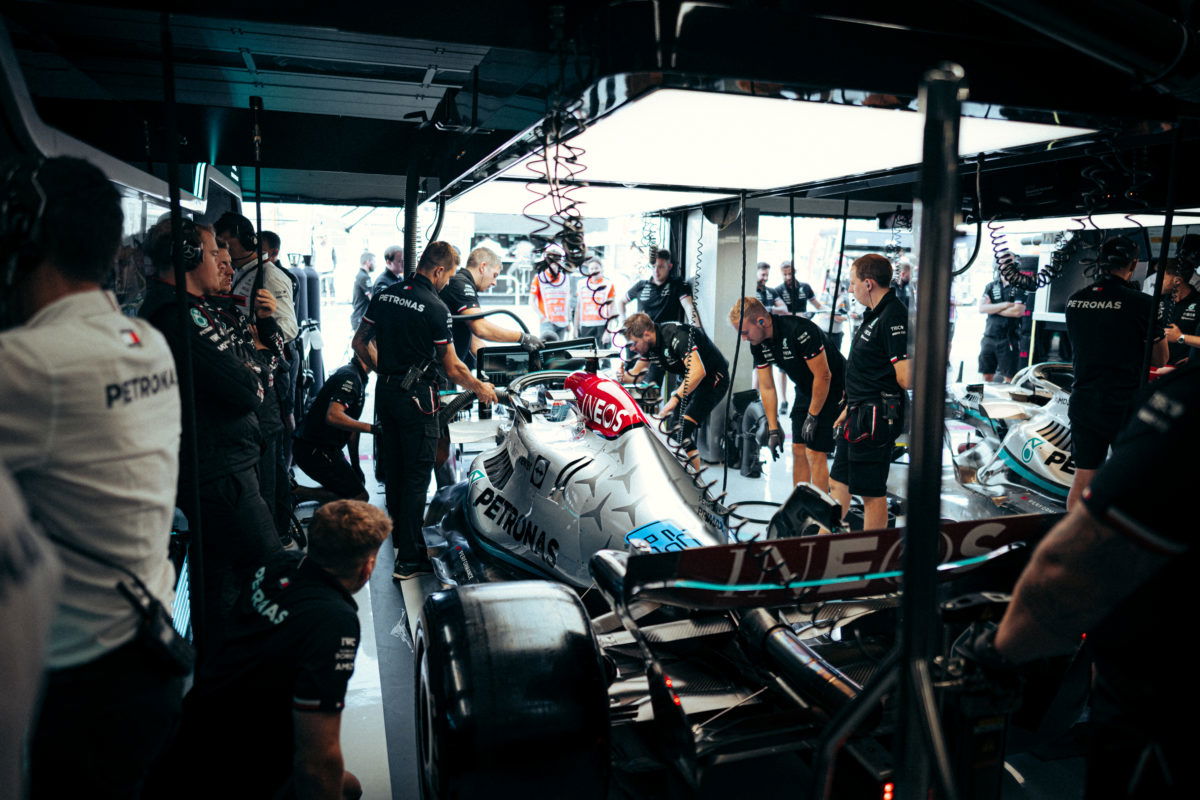

Formula 1’s next generation of power unit regulations offers a significant challenge when it comes to optimising the complete package.
From 2026, Formula 1 will simplify the current regulations by eliminating the MGU-H while increasing the emphasis on electrification and introducing sustainable fuels.
The rules have been designed in an attempt to lure new manufacturers into the sport. And it has already worked, with Audi committing to becoming an engine supplier (at least) and Porsche also interested.
It was expected that the latter would partner with Red Bull, though discussions there broke down.
“The changes for ’26 are still quite broad. It’s a whole new power unit,” explained Hywel Thomas, Managing Director of Mercedes AMG High Performance Powertrains.
“We look forward to the challenge and are excited by the increase in the electrification of the power unit, the increase in the size of what up to now has been the MGU-K.
“That’s going to be hugely important and very different and links well to what is going on in the road car environment.
“And then, of course, to go with that, the reduction in output of the combustion engine, but the conversion over to running with sustainable fuel is going to be another challenge.
“That fuel change is going to be a big part of this regulation set,” he added.
“[It’s] very, very important that we are approaching those environmental issues at a good time for the sport and for everybody.”
To ease the task somewhat for manufacturers, Formula 1 has frozen its current power units until the end of 2025.
That has been done to prevent parallel development programmes which would have served to do little but drive up costs.
There are also limitations on the scale of the development which can be employed, especially surrounding test bench hours.
A manufacturer looking to homologate a power unit for use in Formula 1 must adhere to those regulations else its submission will be rejected.
That means the likes of Audi cannot simply throw unlimited resources at its project before then formally joining the sport in 2026.
Even without the ruleset finalised, the likes of Mercedes were already investing resources into understanding what it did know of the sport’s future.
It’s a process that will now only accelerate.
“We’ve got a project team working on 2026,” Thomas confirmed.
“We continue to push very hard into our existing programmes as well.
“There are a couple of projects coming to an end, such as the Formula E, which means we’re able to move some other people over to the 2026 programme, which is exciting.
“One of the things with the current regulations are, and the regulations between now and 2026, they very much encouraged us to reduce the amount of engineering and the amount of business that is working on the existing product by reducing things like dyno hours.
“So it’s a bit of a moveable feast,” he added.
“We’ve got a good-sized project team already working on it and have done for a little while, as I’m sure everybody has.
“And as we go forward, we’re going to have to move more across because although 2026 is a long way away, it’s going to very quickly approach.”
Red Bull Powertrains is in a similar position to that of Mercedes though its specifics are different given it is effectively a new manufacturer.
That might in future see it partner with another brand but for now, the organisation is looking to develop an in-house product for both Red Bull Racing and Scuderia AlphaTauri.
“Whilst it seems a long way away, it’s still effectively tomorrow in engine terms,” explained Christian Horner.
“There has been a lot of to-ing and fro-ing, going backwards and forwards over these regulations, but it’s not just the technical specification; it’s the sporting regulations and, of course, the introduction of the financial regs.
“Like with all these things, compromises need to be found, and we’re pleased that regulations are now released, that we know what we’re designing an engine to, exactly, with compression ratios fixed and other architecture fixed, which has moved slightly from where the discussions started.
“But I think that it’s good to have that clarity now to be cracking on for 2026.”





















Discussion about this post